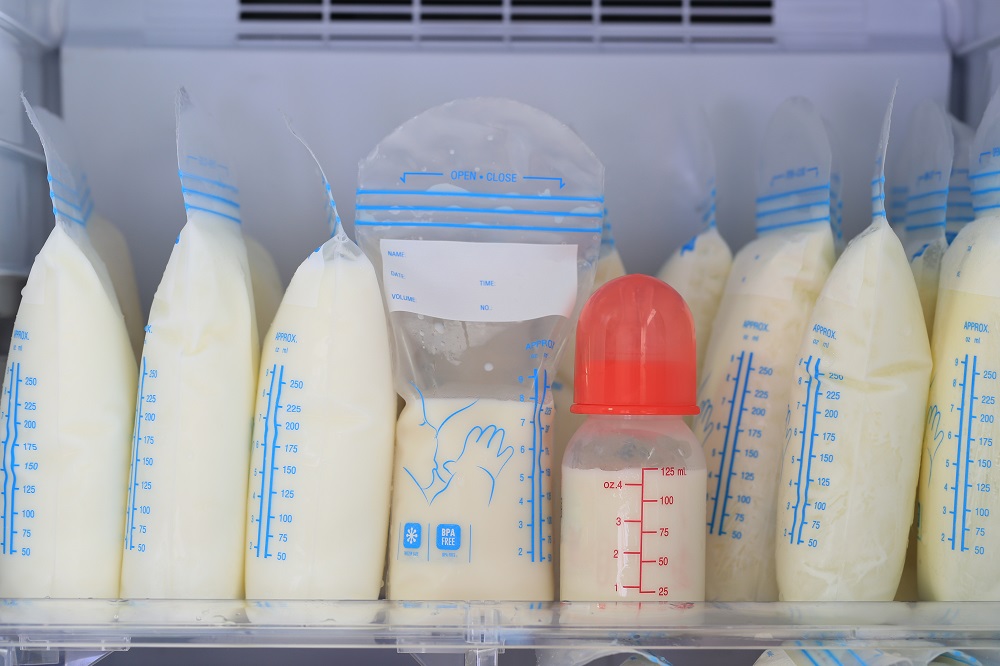Did you know that all breast milk isn’t the same? It turns out that each bottle of breast milk is slightly different – its composition can change based on the time of day it was pumped, what we’ve been eating and even our stress levels when we pumped it.
Here’s a little bit more about how our breast milk changes, and which changes you need to be worried about:
- Changes Based on Time of Day
We get it. It’s 10 p.m. and you’re doing one last pump before you flop into bed. Who wants to take the time to write down the date and time on the bottle? It turns out that keeping track of what time you pumped your milk is much more important than you may think. Studies have shown that breast milk’s composition changes throughout the day, which helps babies set their internal clocks.According to an article from Ardo, a breast pump manufacturer, morning milk is usually higher in volume than evening milk, and it contains more water and less fat. It also contains higher levels of cortisol — a hormone that promotes alertness. When you pump milk at night, you won’t pump as much, and the milk will be thicker and creamier because it is higher in fat and melatonin to help your baby fall asleep.That’s why, if possible, it’s best to give your baby breast milk at the same time of day that it was pumped. You don’t want a really alert baby at 10 p.m. at night! - Changes in Color
Although it might seem a little scary when you notice that your breast milk is changing colors, don’t worry, it’s normal. Milk that’s pumped in the morning may have more of a bluish tint than milk pumped in the evening. And the color of your breast milk may change when you store it, too. After a day in the fridge, you may notice that there are thicker, more yellowy layers on the top and whiter or more bluish layers on the bottom. This doesn’t mean the milk has gone bad; it just means the fat has risen to the top. Just swirl it around a bit to mix it again.What you eat can also change your breast milk’s color too. For example, your breast milk might look a little greenish if you eat a lot of green veggies or certain herbs, or it may look a little red or orange if you eat beets, orange soda or other foods with red, yellow or orange food dye.You may also notice that your breast milk sometimes looks pink, which usually means that you’ve gotten a little bit of blood into your breast milk due to cracked nipples. If you see this, don’t freak out — it’s perfectly safe for babies. However, if there more than a trace amount of blood or it doesn’t clear up on its own in a few days, you may want to call your doctor.However, if your breast milk comes out black, you should be concerned. The antibiotic Minocin may turn your breastmilk black, and Minocin is not recommended when you are nursing. - Changes When Your or Your Baby Is Sick
Amazingly, our breast milk also changes composition when we or our baby is sick to help protect their immune system. Research has shown that when we are exposed to a virus, we can pass along antibodies to the virus to our babies. And when you baby is sick, she can send you a signal through her saliva that helps your body produce antibodies to help her fight off her illness. Pretty cool, right? - Changes Based on Our Stress Levels
Studies have shown that mothers who are stressed can pass the hormone cortisol on to their babies through their breast milk, which may cause babies to be more agitated in unfamiliar situations. So try to relax and destress while you pump.


